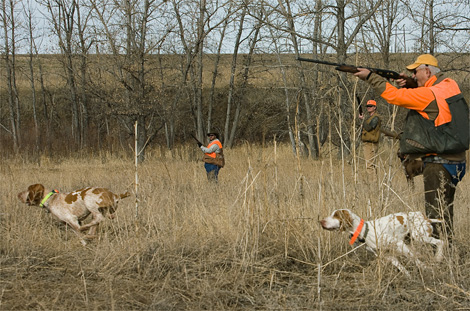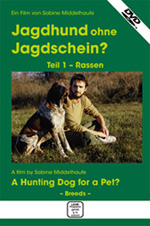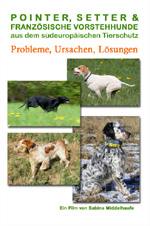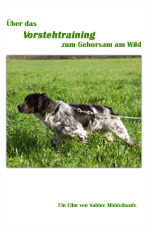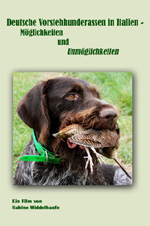The Bracco Italiano in the USA
Interview to Ericka Ransdell-Dennis by Sabine Middelhaufe
Ericka Ransdell-Dennis and her husband Robert, founders of the Garibaldi Kennel in California, are frequent visitors to Italy where they participate in Bracco trials organized by the Italian Bracco Club, SABI, meet breeders and trainers and now and then choose a pup to go home with them to San Diego. As Ericka is a board member of the Bracco Italiano Club of America (BICA) founded in 2007 and of the North American Versatile Hunting Dog Association, I have asked her about the state of the breed in the USA and their possible developement overseas.
Ericka, when did the first Bracchi arrive in the US?
We think the first dogs were imported in 1994.
Do you recall which Kennels they came from?
We do not know where the first Bracchi were from, but the first litter registered in the US was registered under Chiara Della Valle Santa, a bitch imported from Italy in 1998.
|
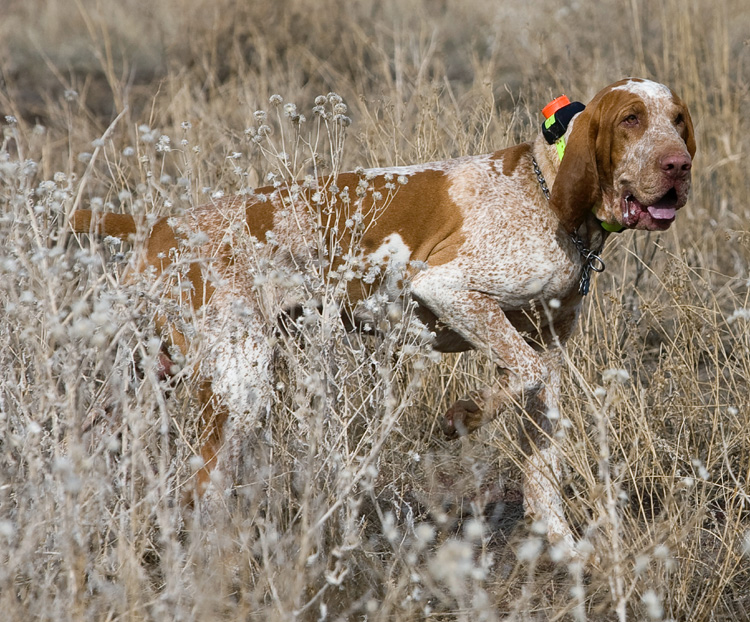
Above: Luigi (prop. Dick Propernick)
Titel: Luigi and Cora (prop. Erich & Sally Bower)
|
How many Bracchi do live in the US at present?
We think between 300 and 400.
And how many pups are born per year?
Anywhere from 20 to 30. But the number is growing with the increase in people who have the dog and are interested in breeding.
Among American owners is there a preference for a certain colouring in the Bracco?
I think there are more Orange and White Bracchi here, but there seems to be a growing preference for the Liver color.
What is it, you think, that attracts people to the Bracco initially?
It’s kind face, quiet demeanor and droopy hound like ears. From a hunting perspective, the bracco has a very nice hunting style and the excellent ability to scent.
|
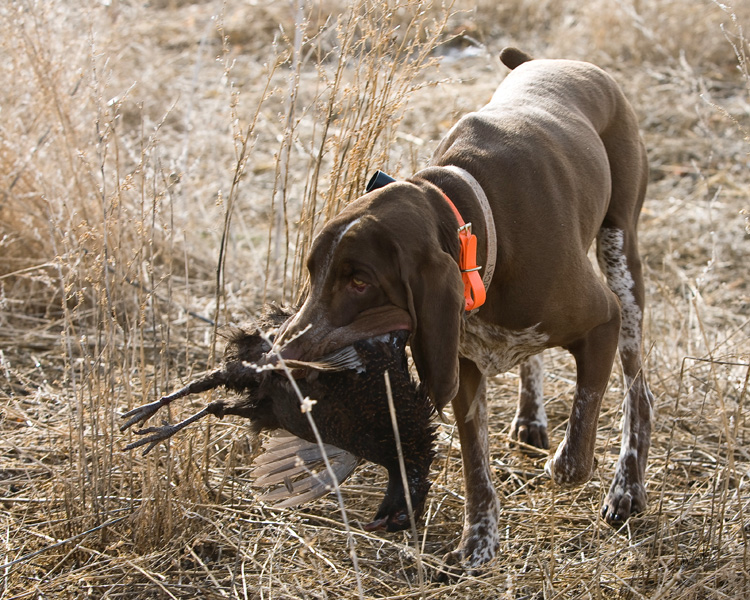
Lucky
|
Called „the thinker“ in Italy, the Bracco has quite a unique nature – does that make him „strange“ or rather more likeable?
Definitely more likeable. US owners want a dog that will be a family pet as well as a good hunting dog. It's sometimes difficult to find a hunting dog that will be calm in the home and enthusiastic in the field. The Bracco fits that description perfectly. They are intelligent dogs that you must respect in order for that hunting instinct to work with you.
When people buy a Bracco what do they hope for and what might be reason for disappointment?
They hope for a long healthy life with the Bracco. Losing a Bracco to a health problem is the biggest disappointment to the owners here. The only other problem is when owners cannot devote the time to teach the dog and it does not work out because they do not understand the breed. Otherwise, there are very few Bracco owners who have been disappointed with their dog.
Has the breed been recognized by the AKC yet?
No – the AKC does not recognize the Bracco Italiano Breed. We are many years away from the recognition. The Bracco Italiano is recognized by the North American Versatile Hunting Dog Association and the United Kennel Club which provide hunt tests and litter registrations.
|
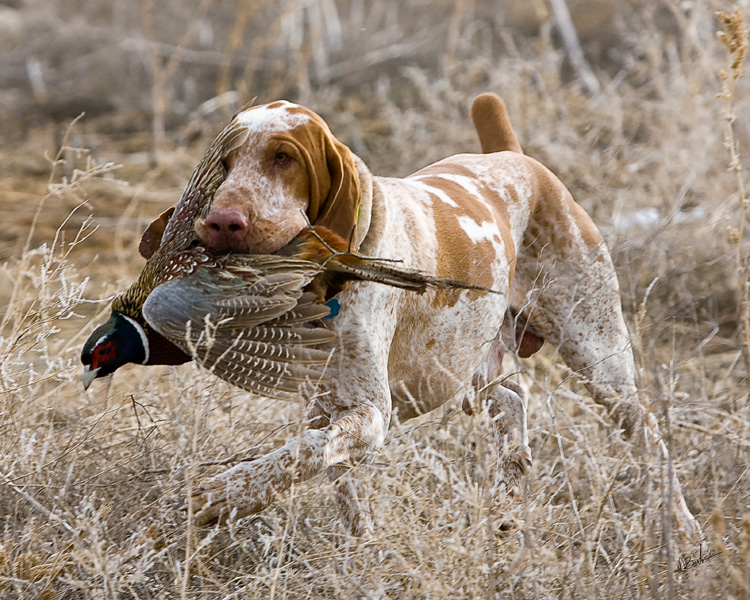
Luigi
|
Your club, BICA, is in active contact with the Italian SABI, isn't it?
Yes, of course – we make annual trips to the field trials. The BICA also works closely with SABI to help understand such items as the Pastrone Standard, help the U.S. import good quality dogs and to ask advice as required.
So there is quite a nice Italian-American exchange?
Yes, absolutely. Right now we are working on bringing the Italians to America to hunt and judge for us. We also look toward the Italians to help train judges in both the field testing and conformation. We will be having a U.S.A. "Raduno" in November of 2011 and are anticipating participation by Italian breeders/judges which would help the U.S. Bracco owners see and understand the Bracco working standards. It is difficult since we do not have the money to pay for transportation. Hopefully in the future we can do more.
I get the impression that you feel very strongly about the contact with the Italian „braccofilia“?
Yes – I believe it is very important to keep up the contact with the Italians. It is also important to be familiar with as many of the breeders in all of Europe as possible. There is so much to learn about the breed and what we should be looking for in hunting style and conformation.
|
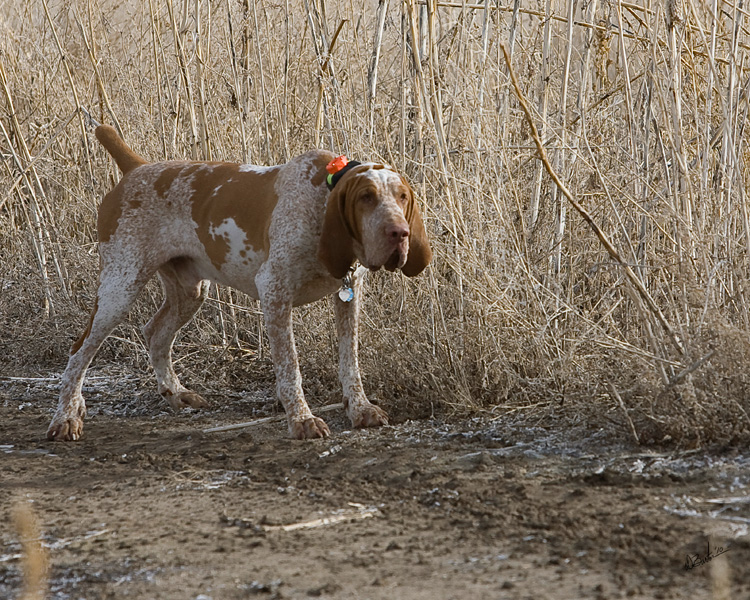
Luigi
|
Since the AKC doesn't recognize the Bracco, on what kind of regulations is the breeding based in the USA?
We do not have regulations but the code of ethics for participation in the Bracco Italiano Club of America includes testing for hips, eyes and elbows (see BICA web site www.thebraccoclub.org). At present, all breeders in the US test for this.
Generally speaking, do you breed according to the Italian/FCI standard or do you prefer a certain type, for instance a taller, heavier built Bracco than the standard describes?
At this time, we have such a small breeding stock, it’s not possible to prefer small, tall, light or heavy. We breed based on health, hunting ability and FCI standards.
A distinguishing mark of the Bracco is his trot. Does it have the same importance in the US than in Italy? Do you or would you use the „braga“ to teach your own dogs to trot properly? Do other owners make use of it?
The trot is not very important to the US owners. However, I am trying to educate the owners on the proper trot thus the importance of having Italians visit the U.S. 2011 gathering to demonstrate the proper trot. The US owners are more interested in results of the hunt. Does the Bracco find birds, point, learn quickly, is it healthy, and does it have the Bracco personality. In the future, when we have field trials and hunt tests that test the Pastrone Standard, we will pay more attention to this. The Braga is not something we need or use. Most people do not find this useful to finding birds.
|
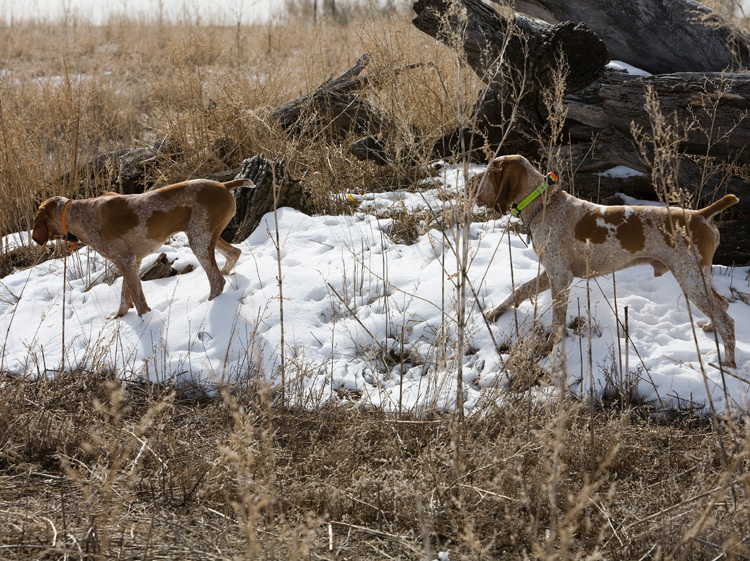
Luigi and Bella (prop. Paul Mcdaniel)
|
Is the Bracco mostly kept as a family pet or as a working dog?
The majority of owners in the US use their dogs as hunting dogs. The aim of the Bracco Italiano Club of America is to promote the Bracco as a working dog and try to sell puppies to hunters. Since they are a wonderful family pet, we also promote them as a dual dog. They should be like family members to the owners and also hunting companions. When they are not hunting, they are most happy when in the home with their owners.
Are Bracchi often present at dog shows? And what do American judges make of a breed relatively unknown in the States?
Only a few people show their dogs in the dog shows and participate in the working trials. It is not very popular with the Bracco owners mainly because the shows and the trials are far away from most owners. Most judges have never seen a Bracco before and have to rely on the standard to judge rather than experience. They do judge the Bracco differently than in Europe. They judge on overall soundness of the breed rather than on the finer points because there is usually only one Bracco present at the shows and they are judged against other breeds.
|
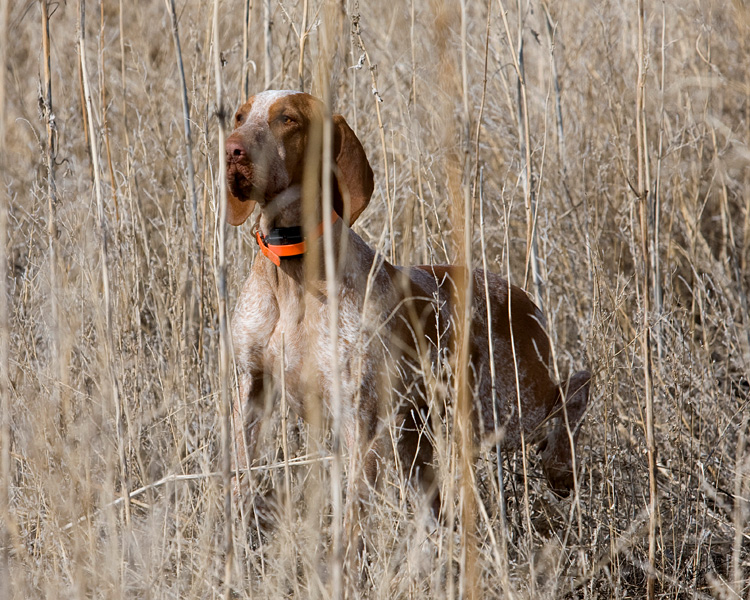
Bella
|
And what about working trials?
All tests in the US are judged with other dogs or against a testing standard. They are judged on results of the hunt and obedience and not on the Italian working standard of the breed. The AKC does allow the Bracco to participate in their hunt tests and looks for search, pointing, retrieving, and backing. The North American Versatile Hunting Dog Association has a puppy test that assesses search, pointing, scenting, tracking, desire to work and swimming. The adult test looks for searching, pointing, steadiness, retrieving, obedience, retrieve of duck by drag, retrieve of duck on water, search for duck on water, desire to work, use of nose, and obedience.
You have been to Italy quite often and have seen Bracchi hunting. What could you tell us about the differences and similarities of working Bracchi in the US and Italy?
It is very different. In Italy the fields are smaller, the dogs work closer and trot more. The trainers and judges look more at the Pastrone Working standard than the US. The US owners just want a working Bracco that produces birds. The style is not as important. The hunting areas in the United States for wild birds tends to be much larger tracts of land and the Bracco is required to cover much more territory and it is not believed that a Bracco can keep up the fast trot for an entire day. There is the opportunity to hunt for pen raised birds which typically can be hunted in a smaller field and this type of hunt would only last about three hours. With the further education of the American Bracco owner we hope to introduce a testing program similar to that of the Italians in the near future.
|
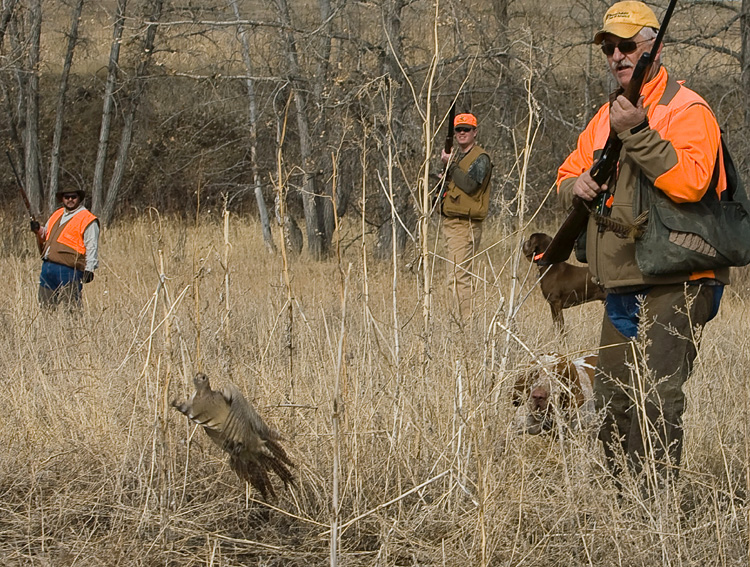
Dick Propernick, Erich Bower , Matt Rivera and Luigi.
|
Some breeds who were brought to the US have been altered so much from the original, that they actually became new breeds, for instance the American Cocker Spaniel, the American Water Spaniel, the German Shorthaired Pointer. Do you think it possible that one day there will by an American Bracco, perhaps more adapted to the needs and wishes of American owners?
That is definitely not something the Bracco Club wants to happen. We want to maintain the standard and the working bird dog that the Italians have created. The Club will do everything in it’s power to make that happen. However, we cannot control everything that happens to the breed and we hope it will remain true to it’s origins. The breeders and owners in the US are passionate about the breed therefor we are serious about health issues and test for genetic diseases. We try to place most Bracchi with hunting homes. We very much hope the breeders in Italy will respect this fact and send good and genetically sound breeding stock to responsible hunters and owners here in the US. The gene pool in the U.S. is shrinking and the introduction of new blood lines is a critical factor in the future of the Bracco in the United States.
As a sportswoman, how would you compare the Bracco to other gun dogs you've known well, as far as training and working them is concerned?
I am President of the local chapter of the North American Versatile Hunting Dog Assocation. I have been able to train with every continental breed: Shorthair pointers, Pudelpointers, Griffons, Vizslas, Wirehaired Pointers… The Bracco stands out when it comes to training and I had to learn on my own some techniques. The Bracco cannot be pressured to do a task. They must be asked politely and it must be fun. They learn through repitition not force. Once you learn this, the Bracco is very easy to train. They aim to please you and I love to hunt with them. Since the Bracco is relatively unknown in the US, the hunt test judges sometimes comment how elegant and beautiful they are. They are a pleasure to watch and just like you said earlier „think about the hunt“. We have experienced many breeder/owners/hunting guides of hunting dogs as I mentioned above that have been very impressed again with their nose, their solid hunting style, and their athleticism. Infact one breeder of GSP’s has just become a breeder of the Bracco. |














